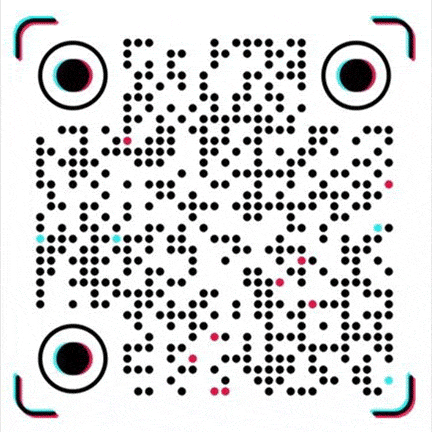PET Heat Deflection Temperature Analysis
PET (polyethylene terephthalate) is a widely used thermoplastic polyester. Its heat deformation temperature (HDT) is not only a key indicator for measuring the heat resistance of materials, but also has a profound impact on the application scenarios and processing technology of PET in different fields.
The following is an in-depth expansion of PET's HDT from multiple dimensions:
1. Internal factors affecting PET's heat deformation temperature
Crystallinity: PET is a semi-crystalline polymer, and its crystallinity has a decisive influence on HDT. If unreinforced PET is in a rapid cooling state during the molding process, it is easy to form an amorphous structure with low crystallinity, resulting in weak inter-molecular chain forces and relatively low HDT, usually around 85°C.
Annealing can promote the regular arrangement of molecular chains, improve crystallinity, and significantly improve HDT. Studies have shown that after proper annealing, the crystallinity of PET can be increased from 10% - 30% to 40% - 60%, and the HDT will also increase by 10℃ - 20℃ accordingly.
Molecular chain structure: The benzene ring structure in the PET molecular chain gives it a certain rigidity, but the regularity and molecular weight of the molecular chain also affect HDT.
The higher the molecular weight, the higher the degree of entanglement between molecular chains, and the stronger the material's ability to resist thermal deformation.
In addition, if comonomers (such as isophthalic acid) are introduced into the PET molecular chain, the regularity of the molecular chain will be destroyed, the crystallization ability will be reduced, and HDT will decrease.
Additives and reinforcing materials:
Fillers: Adding inorganic fillers such as talcum powder and calcium carbonate can improve the HDT of PET to a certain extent.
These fillers are evenly dispersed in the PET matrix, restricting the movement of the molecular chain and acting as physical cross-linking points. However, the amount of filler added needs to be moderate. Excessive addition will lead to poor material fluidity, difficult molding, and a flat effect on HDT improvement.
Reinforcement fiber: Glass fiber (GF) is the most commonly used reinforcement material to increase the heat deformation temperature of PET.
The addition of glass fiber can not only significantly improve the mechanical properties of PET, but also greatly improve its HDT. Glass fiber plays a skeletal support role in the PET matrix, limiting the movement of molecular chains at high temperatures. Generally speaking, as the glass fiber content increases, the HDT of PET tends to rise. When the glass fiber content reaches 30%, the HDT of PET can be increased from about 85℃ to 225℃, or even higher.
Carbon fiber (CF) can also be used to reinforce PET. Compared with glass fiber reinforced PET, CF reinforced PET can not only improve HDT, but also give the material excellent conductivity and lightweight properties, but the cost is relatively high.
2. The influence of test conditions on the thermal deformation temperature of PET
Load size: Different test standards specify different loads, the common ones are 0.45MPa and 1.82MPa. Under a low load of 0.45MPa, the stress on the PET material is small, and the molecular chain needs a higher temperature to deform sufficiently, so the measured HDT is relatively high; under a high load of 1.82MPa, the material is more likely to deform, and the corresponding HDT is lower.
Taking unreinforced PET as an example, its HDT is about 85℃ under a load of 0.45MPa, while under a load of 1.82MPa, the HDT may drop to 65℃ - 70℃.
Heating rate: The heating rate has a significant impact on the HDT test results. When the heating rate is fast, the heat transfer inside the material is insufficient, and the molecular chain does not have time to respond to the temperature change and deform, resulting in a higher measured HDT; on the contrary, when the heating rate is slow, the molecular chain has enough time to adjust and deform, and the measured HDT is closer to the heat resistance in actual use. For example, if the heating rate is increased from 2℃/min to 5℃/min, the HDT test value of PET may increase by 5℃ - 10℃.
Sample size and processing accuracy: The dimensional accuracy of the sample directly affects the HDT test results. A thickness deviation of 0.1mm may cause the HDT to fluctuate by 5℃ - 10℃. In addition, factors such as the flatness of the sample surface and whether internal stress is generated during processing will also affect the test results.
Therefore, when conducting HDT tests, the sample must be processed strictly in accordance with the standards and the surface of the sample must be flat and free of defects.
3. The relationship between PET heat deformation temperature and application scenarios
Packaging field: In applications such as food packaging and beverage bottles, unreinforced or slightly reinforced PET is usually used. Since these products are used at room temperature or low temperature, the heat resistance requirements are relatively low, and the HDT of unreinforced PET of about 85°C can meet most needs.
However, in the hot filling process, in order to avoid deformation of the bottle body during high-temperature filling, PET will be properly crystallized to increase its HDT so that it can withstand short-term high temperatures of 85°C - 95°C.
Electronic and electrical field: The internal components of electronic and electrical products generate heat when working, requiring the shell material to have a certain degree of heat resistance. Glass fiber reinforced PET is often used to make electrical housings, coil skeletons and other components due to its high HDT (about 225°C) and good mechanical properties and flame retardant properties.
In some occasions where higher heat resistance is required, such as the housing of the automotive electronic control unit (ECU), special engineering plastics with higher HDT or PET composite materials with further increased glass fiber content may be selected.
Automotive industry: The components in the engine compartment of the car need to withstand harsh environments such as high temperature and oil pollution, and the heat resistance of the materials is required to be high.
Glass fiber reinforced PET is widely used in automobile engine under-hood components such as water pump impellers and intake manifolds due to its excellent comprehensive properties, including high HDT, good chemical resistance and dimensional stability.
With the development of lightweight vehicles and new energy vehicles, the performance requirements for PET materials are constantly increasing. R&D personnel are exploring methods such as composite reinforcement and optimized molding process to further improve its HDT and other properties.
The heat deformation temperature of PET is affected by a variety of factors. A deep understanding of these influencing factors not only helps to reasonably select and use PET materials, but also provides a theoretical basis for improving its performance through modification and process optimization, and promotes PET to play a greater value in more fields.
Our platform connects hundreds of verified Chinese chemical suppliers with buyers worldwide, promoting transparent transactions, better business opportunities, and high-value partnerships. Whether you are looking for bulk commodities, specialty chemicals, or customized procurement services, TDD-Global is trustworthy to be your fist choice.















